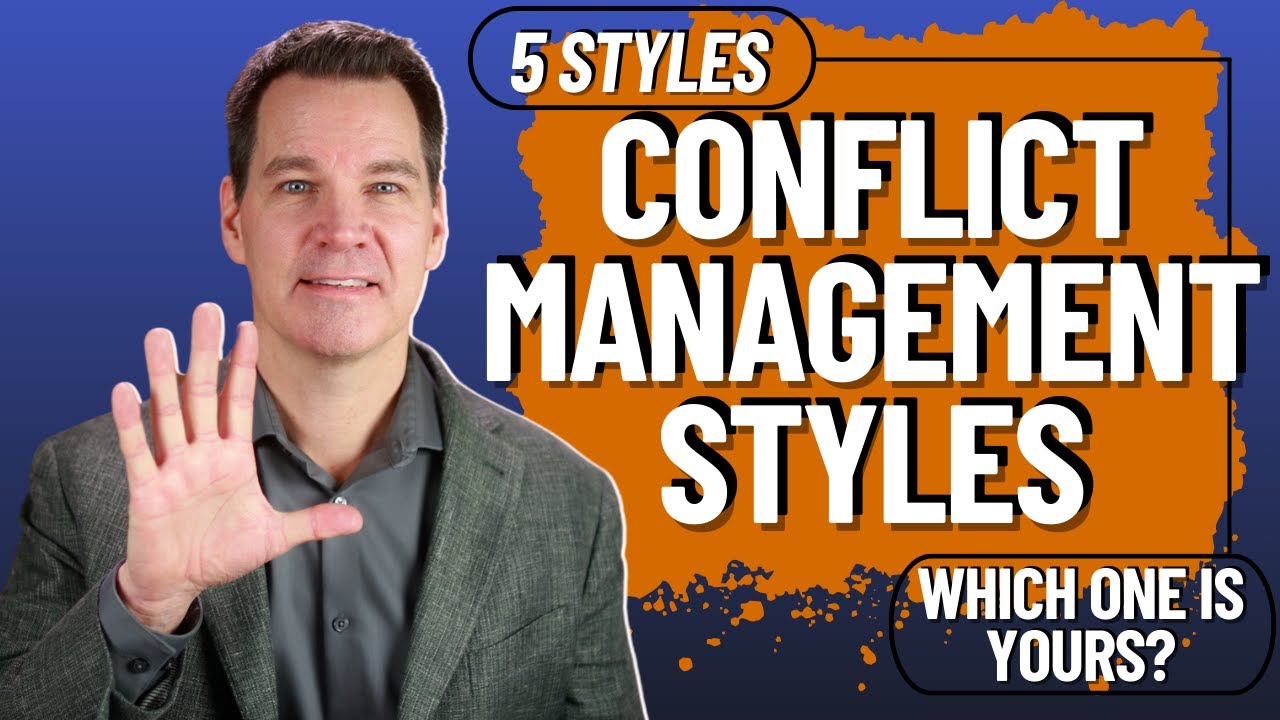Thomas-Kilmann Conflict Model Explained
Summary
TLDRThe Thomas Kilmann Model outlines five conflict management styles based on assertiveness and cooperativeness: Competing (win-lose, suitable for emergencies), Avoiding (useful for trivial issues), Collaborating (win-win, ideal for complex scenarios), Accommodating (when preserving future relations is key), and Compromising (temporary solutions). Each style impacts conflict resolution outcomes, highlighting the importance of choosing the right approach for different situations.
Takeaways
- 🔍 The Thomas Kilmann Model categorizes five conflict management styles based on assertiveness and cooperativeness.
- 🏁 The 'Competing' style is assertive but uncooperative, often seen as a win-lose approach suitable for emergencies or decisive situations.
- 🙅♂️ 'Avoiding' involves neither asserting one's own needs nor cooperating with others, useful for trivial issues or emotionally charged environments.
- 🤝 The 'Collaborating' style is both assertive and cooperative, aiming for a win-win solution, ideal for complex challenges requiring innovation.
- 🤔 'Accommodating' is highly cooperative but lacks assertiveness, potentially sacrificing one's own goals to meet others' needs, beneficial when preserving relationships or when the other party is an expert.
- 🔄 'Compromising' involves moderate levels of both assertiveness and cooperation, often a temporary solution that can be seen as a lose-lose scenario.
- 💡 Each style has its appropriate context, and choosing the right one can significantly impact the outcome of conflict resolution.
- ⏱ The 'Collaborating' style, while effective for complex issues, requires significant time and effort to build consensus and trust.
- 🚫 The 'Avoiding' style can be a quick escape from conflict but does not address the underlying issues.
- ⚖️ 'Compromising' can be a practical approach for temporary solutions, but it may become a habitual way out that avoids deeper resolution.
Q & A
What is the Thomas Kilmann Model of Conflict Management?
-The Thomas Kilmann Model of Conflict Management is a framework that organizes five conflict management styles based on two dimensions: assertiveness and cooperativeness.
What are the two dimensions that the Thomas Kilmann Model uses to categorize conflict management styles?
-The two dimensions are assertiveness and cooperativeness, which determine how much focus is placed on one's own concerns versus satisfying the other person's needs.
What is the 'Competing' style in the Thomas Kilmann Model?
-The 'Competing' style is a win-lose approach where one acts assertively to achieve their goals without seeking to cooperate, potentially at the expense of others.
Under what circumstances is the 'Competing' style appropriate according to the model?
-The 'Competing' style may be appropriate for emergencies when time is of the essence or when a quick, decisive decision is needed.
What is the 'Avoiding' conflict management style?
-The 'Avoiding' style involves simply avoiding the issue, not helping others reach their goals, and not pursuing one's own, which can be effective when the issue is trivial or when there's no chance of winning.
How does the 'Collaborating' style differ from the other styles in the model?
-The 'Collaborating' style is a win-win approach that seeks to find new or innovative solutions, often requiring a high degree of trust and consensus building.
What are the potential downsides of the 'Collaborating' style?
-The downsides of 'Collaborating' include the need for high trust and that reaching consensus can be time-consuming and require significant effort to get everyone on board.
What is the 'Accommodating' style and when is it effective?
-The 'Accommodating' style involves high cooperation, potentially at one's own expense, and is effective when the other party is an expert with a better solution or when preserving future relations is important.
What does the 'Compromising' style entail and when might it be used?
-The 'Compromising' style is a lose-lose scenario that requires moderate levels of assertiveness and cooperation, suitable for temporary solutions when a quick resolution is needed.
Why might the 'Compromising' style be considered a trap?
-The 'Compromising' style might be a trap because it can become an easy way out, leading to suboptimal solutions where neither party truly gets what they want.
How does one's choice of conflict management style impact conflict resolution outcomes?
-The choice of conflict management style influences the outcome of conflict resolution by determining the approach to addressing one's own concerns versus the concerns of others.
Outlines

هذا القسم متوفر فقط للمشتركين. يرجى الترقية للوصول إلى هذه الميزة.
قم بالترقية الآنMindmap

هذا القسم متوفر فقط للمشتركين. يرجى الترقية للوصول إلى هذه الميزة.
قم بالترقية الآنKeywords

هذا القسم متوفر فقط للمشتركين. يرجى الترقية للوصول إلى هذه الميزة.
قم بالترقية الآنHighlights

هذا القسم متوفر فقط للمشتركين. يرجى الترقية للوصول إلى هذه الميزة.
قم بالترقية الآنTranscripts

هذا القسم متوفر فقط للمشتركين. يرجى الترقية للوصول إلى هذه الميزة.
قم بالترقية الآن5.0 / 5 (0 votes)






